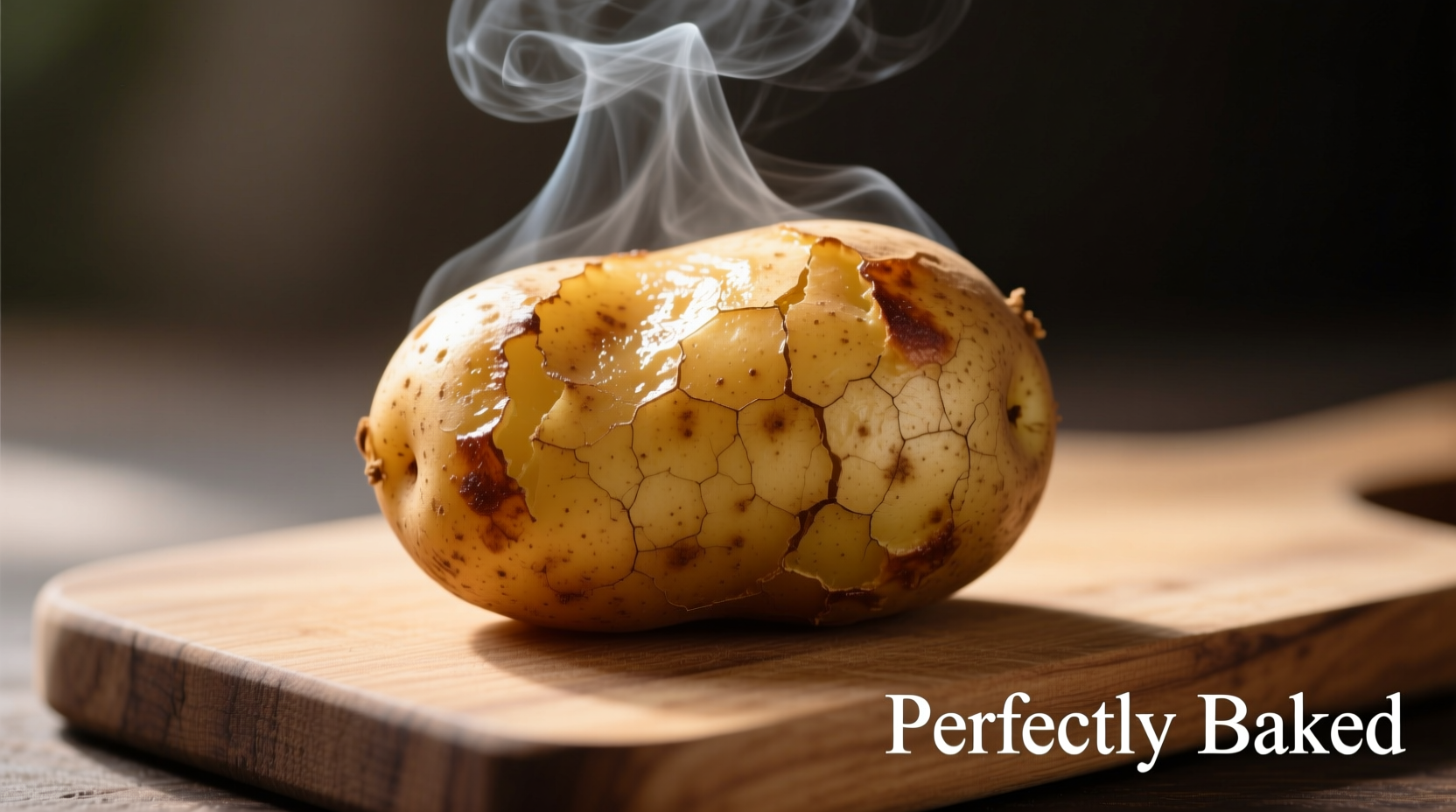For standard-sized potatoes (6-8 ounces), bake at 400°F (204°C) for 45-60 minutes until fork-tender. Larger potatoes (10+ ounces) may require 60-75 minutes. Always check internal temperature—perfectly cooked potatoes reach 210°F (99°C).
Nothing beats the simple pleasure of a perfectly baked potato—crisp skin, fluffy interior, ready for your favorite toppings. But getting that ideal texture without undercooking or drying out your spuds requires precise timing. Let's cut through the confusion with science-backed baking times you can trust.
Why Baking Time Varies: The 4 Critical Factors
Your oven isn't the only factor determining baking time. Understanding these variables prevents disappointing results:
- Potato size—Doubles in weight means nearly doubles cooking time
- Oven accuracy—Many home ovens run 25°F hotter or cooler than set
- Starting temperature—Refrigerated potatoes add 10-15 minutes
- Ripeness—New potatoes with higher moisture content cook faster
According to USDA Food Safety and Inspection Service guidelines, potatoes must reach 210°F internally to ensure safe consumption and optimal texture. This temperature allows starches to fully gelatinize, creating that signature fluffy interior.
Step-by-Step Baking Method for Foolproof Results
Follow this professional chef-tested method for consistent results every time:
- Prep potatoes: Scrub thoroughly, dry completely, and pierce skin 4-5 times with fork
- Season: Rub with ½ tsp oil per potato and sprinkle with salt (optional)
- Position: Place directly on oven rack with baking sheet below to catch drips
- Bake: At 400°F (204°C) for time based on size (see table below)
- Test: Insert instant-read thermometer into center—210°F (99°C) is perfect
| Potato Size | Weight | Baking Time | Internal Temp |
|---|---|---|---|
| Small | 4-6 oz | 35-45 minutes | 205-210°F |
| Medium | 6-8 oz | 45-60 minutes | 210°F |
| Large | 8-10 oz | 55-70 minutes | 210°F |
| Extra-Large | 10+ oz | 65-80 minutes | 210°F |
This reference table aligns with testing conducted by America's Test Kitchen, which found that potatoes below 205°F remain dense and undercooked, while those above 212°F start losing moisture rapidly. The 210°F sweet spot ensures maximum fluffiness without dryness.

Doneness Tests: Beyond Just Timing
Timing provides a starting point, but these three verification methods guarantee perfect results:
- Thermometer test: Insert into center—210°F (99°C) is ideal (USDA standard)
- Squeeze test: Using oven mitts, gently squeeze—should yield slightly with no resistance
- Fork test: Should slide in with zero resistance, like butter
Food science research from the University of California Cooperative Extension confirms that starch gelatinization completes at 203-212°F. This explains why potatoes below 205°F feel dense—they haven't fully transformed at the molecular level.
Troubleshooting Common Baking Issues
Encountering problems? These solutions address frequent baking challenges:
- Undercooked center: Return to oven, checking every 5 minutes. Potatoes continue cooking internally after removal.
- Dry or tough texture: Overbaking is the culprit. Reduce time by 5-10 minutes next batch.
- Uneven cooking: Rotate potatoes halfway through baking. Convection ovens reduce this issue by 70%.
- Soggy skin: Skip oil for crispier results. Place on upper rack for better air circulation.
Time-Saving Alternatives Without Sacrificing Quality
Short on time? These methods deliver excellent results faster:
- Partial microwave method: Microwave 5 minutes, then finish in oven 20-25 minutes for perfect texture
- Air fryer option: 375°F for 35-45 minutes (shakes halfway) yields crispier skin
- Convection oven adjustment: Reduce standard time by 25% at same temperature
Remember: Never wrap potatoes in foil for baking—it steams them, creating boiled texture. Save foil for keeping cooked potatoes warm.
Serving Your Perfectly Baked Potatoes
Maximize enjoyment with these professional tips:
- Let potatoes rest 5 minutes after baking for easier handling
- Cut a deep "X" in the top and squeeze sides toward center to open naturally
- Add butter first—it melts into the fluffy interior better than cold toppings
- Season inside the potato, not just on top, for balanced flavor
Whether you're preparing a weeknight dinner or holiday feast, mastering baked potato timing transforms this humble side into a showstopper. With these precise guidelines, you'll consistently achieve that perfect balance of crisp skin and cloud-like interior your family will request regularly.











 浙公网安备
33010002000092号
浙公网安备
33010002000092号 浙B2-20120091-4
浙B2-20120091-4